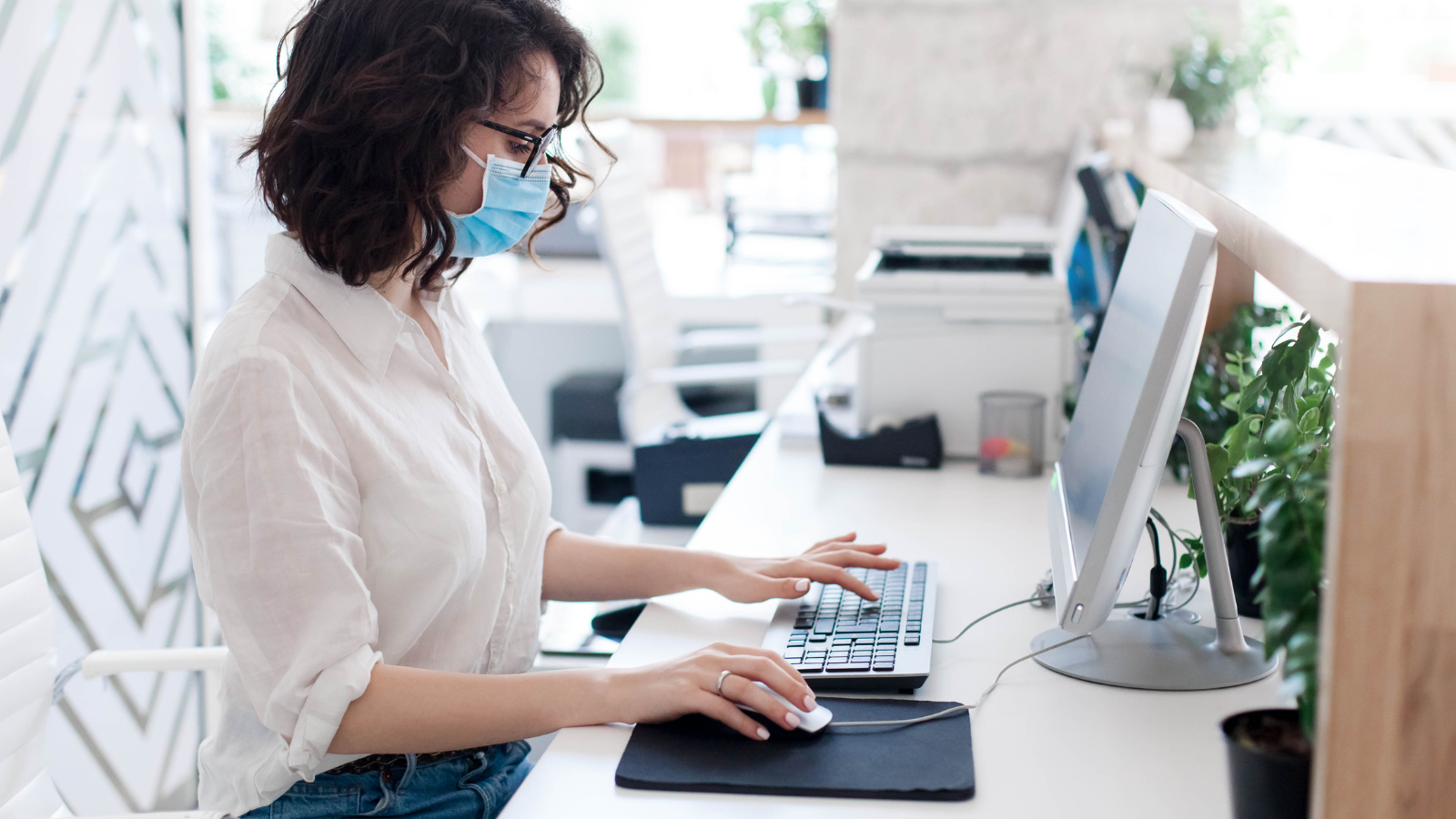
Facilitating the safe return to the workplace – guide launched
December 06, 2020
2020 has been a particularly challenging year; full of uncertainty and constant adjustment to the circumstances we find ourselves in both globally and in our day to day lives. As countries around the world went into lockdown in a bid to flatten the curve of the COVID-19 pandemic, our homes became our schools, workplaces and havens.
As an NPO operating in the South African property sector, we have seen how hard the built environment has been hit by the COVID-19 pandemic. “What is emerging is a realisation that lockdown cannot be a long term strategy against COVID-19 and that the ‘new normal’ for workplaces is evolving because of the need for human interaction,” explains Georgina Smit, Head of Technical at the GBCSA.
Collaboration, casual conversation and mentorship that happens when employees share a physical office space is key to building office culture and employee wellness. Although a new normal for office working is emerging, it will need to respond not only to a changed world of work but will have to manage health related risks as well. Cities are actively advocating for the safe return to work to additionally support shops, restaurants and city life in order to sustain property values and cities as a whole. To this end, the GBCSA encourages the return to work in a safe and responsible manner.
In response to the need to return to the workplace, the GBCSA partnered with Zutari (formerly known as Aurecon), to develop a technical guide for existing buildings that identifies best practise recommendations for a healthy and safe return. The guide is available for free and is intended for building owners, facilities managers, office managers and tenants.
“Commercial buildings are not typically designed to standards aimed at minimising the spread of infectious disease to the extent of hospitals that are built for this purpose. However, there are various measures that can be implemented to reduce the risk of transmission,” explains Martin Smith, an experienced mechanical engineer and Technical Director at Zutari.
The framework and guideline consists of 5 categories and 45 initiatives and has been put together to understand the range of options that should be considered when implementing the return to the workplace, with safety as the key priority. It provides an overview that identifies infection control strategies at various levels of decision making and responsibility.
Georgina explains that “the guidelines are set up in a structure similar to the Green Star rating tools with various interventions grouped under a number of applicable categories. A short aim description, and a background is provided for each initiative. The guide puts forward a recommended best practice for each initiative. It a user friendly starting point for stakeholders to understand what needs to be considered for a safe workplace.”
The guide considers initiatives related to management, personal behaviour, indoor air quality, safe water systems and design for safety. Each category has been collated around the point of control within the building in mind. For example, the Management Category highlights the need for mental health support services that encourage resiliency and ensures that discrimination does not occur.
Georgina says that the first step for those interested in applying this to a building they work in, is a healthy building assessment audit. “The purpose of this is to provide an understanding of the current status of the building and its related services and address the preparedness of management and staff to handle health related risks. It serves as a gap analysis of your building’s status in relation to desired outcomes and requirements of this guide”.
Martin emphasises that role of air quality that needs to be considered. “You really want to address building ventilation rates to ensure sufficient ventilation or outdoor air supply rates are provided to minimise a build-up of pathogens or contaminants suspended in the air. Good amounts of fresh also contribute to occupant wellness, which could have translate into productivity benefits”
When considering mitigation strategies for your building, it is important to understand how infections such as COVID-19 spread. The risk associated with the following four most common transmissions routes should to be addressed when using this guide: person to person via macro droplets; airborne transmission; fomite transmission and faecal oral transmission.
“Mitigating risks associated with each one of these transmission routes has a massive impact on the way a building and its occupants need to be managed to ensure everyone’s safety,” Martin adds.
It is the responsibility of organisations encouraging staff to return to work to ensure due processes and protocols are followed for the safety of employees. Companies need to be compliant with the SA Government Coronavirus (COVID-19) regulations and guidelines and this guideline provides free additional robust support for the South African commercial and retail sector, through the lens of green building priorities.
Let us use this opportunity to facilitate the shift to creating healthy spaces for people to work, collaborate and contribute to creating a better place for all of us.
The Framework & Guideline for the Safe return to office can be found here. The excel document of the initiatives can be found here.
Issued by: Green Building Council South Africa contact: [email protected]






